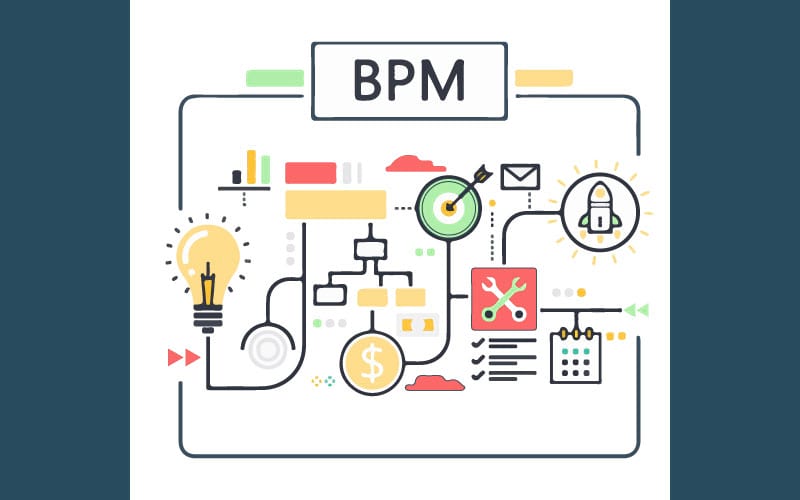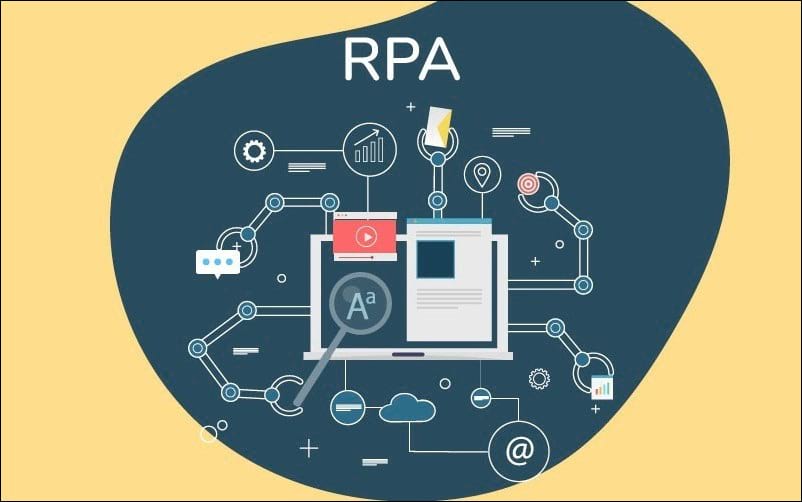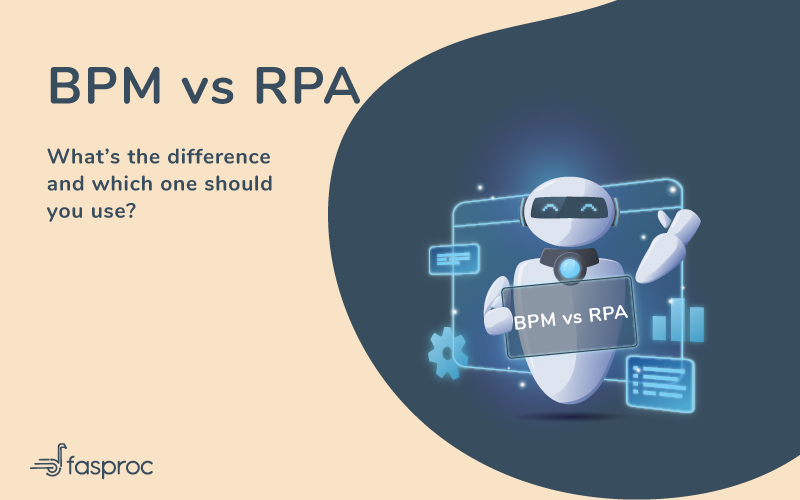Since we are living in the information era, it has become important for brands to automate, digitalize and make use of modern technology to minimize menial tasks. Robotic process automation(RPA) is the new buzz word in the market. It might sound like a complex rocket science mechanism but it’s pretty simple to understand.
Also, a lot of times, people confuse Robotic Process Automation(RPA) with Business Process Management(BPM). We are going to learn what is the difference between BPM vs RPA.
Before jumping into the differences between RPA and BPM, let’s define them individually.
Short on time? Jump around any section
What is Business Process Management (BPM)?

Business Process Management is a discipline that allows you to design, edit, and analyze the core processes of your business.
There are multiple departments in every business. Every department has its own process of getting a task done. Business Process Management helps a company take a look at the bigger picture. It evaluates the processes and finds the gaps that could be filled to create a better and more efficient workflow.
What is Robotic Process Automation (RPA)?

Robotic process automation (RPA) is the way of applying the technology that would enable you to configure computer software or (as the buzz word suggests) robot to do their menial, data-heavy and monotonous tasks. These tasks can range from processing transactions to copying data from one place to another.
RPA robots are able to mimic the user’s actions. You can train them to fill in forms, scrape data from different websites, move files from one location to another, etc.
Differences between BPM and RPA
Examples of BPM and RPA :
-
Example of Business Process Management (BPM)
BPM will be implemented continuously in any organization. This discipline tackles the long term difficulties for the organization. Let’s assume you have an HR onboarding process that you go through every time an employee joins your organization. It has a list of tasks like creating their email account, adding them to different tools that are used by the company, giving them an idea of leave policies. You can create a process that would include each of these tasks. Once you create the process, you can do regular analysis of the outcomes. This way you will be able to learn from your experiences.
-
Example of Robotic Process Automation (RPA)
RPA can be implemented whenever it is needed. Let’s say you have a job of finding usernames of twitter ids with followers more than 100k. You can search through different catalogs of products available online. You can rent a bot and train it to do this job. Once you are ready, just run the bot.
If we take an example of the IT department, we can get even more clarity on the topic. Imagine there is a company of 200+ people. Every employee will need IT-related help. These requests of the employees come to the IT department and they have to manual sign in to multiple accounts to fulfill their request. It might be important to keep a log of who gets what hardware and software but the menial task of logging in and approving requests can take up a lot of time of the people. You will find this gap when you implement BPM in your business. Now that you know there is a gap, you can run a bot to approve these requests.
Combined Strategy
After understanding these two terms, you must have come up with the logic that these two can work together. If you use a combined strategy, you will be able to achieve better efficiency and productivity. While you are working on business process management, make a list of all the steps or processes that are monotonous and menial. Once you have gathered this information, all you need to do is assign a bot according to your budget, priority and workflow. Although, RPA is an expensive technology and it’s quite unpopular in mid-size companies, but if you can implement it, it will surely help you reach your goals faster and more efficiently.
What works for you? BPM or RPA?
If you see a lot of gaps in the way your processes are running or you see room for improvement in your processes, you should implement BPM. It would require a little understanding of the discipline. But once you have learned it, it will save you a lot of time. Make sure you do enough research online and offline regarding your business processes and steps to create an efficient business process before starting.
If your team has a high opportunity cost that they lose out on due to monotonous repetitive tasks, you should definitely think about robotic process automation. It will decrease the opportunity cost. Robots do not get bored of doing menial tasks over and over again. Humans do. That’s why RPA is the mantra to employee satisfaction as well. When employees have more meaningful work, their job satisfaction increases.
Conclusion
As mentioned earlier, they can complement each other. When you know exactly how to implement these with one chord, you’d be able to achieve remarkable results. RPA and BPM might sound complex scientific terms but once you start reading about it, it’s pretty easy. Thousands of businesses have already started leveraging the benefits of this technology, you should do it too. If you have any questions or queries regarding BPM or RPA, do leave a comment down below. We’d be happy to help you with the best of our knowledge.


Trackbacks/Pingbacks